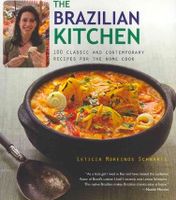Label
All
0
Clear all filters
🔥 Try our grilling cookbooks and save 25% on ckbk membership with code BBQ25 🔥
Appears in
Published 2012
This tuber vegetable also goes by the names manioc or cassava. Earthier tasting than a potato and richer in starch, this vegetable is one of the foundations of Brazilian cooking. It comes from a perennial shrub with origins in the Amazon. The plant’s long roots grow in clusters and are covered in a thick, shiny brown skin and a thick white layer. When cut off, the outer layers reveal a snow white, firm interior with grey or purple veins. The centre of the vegetable also carries a woody fibre that is not pleasant to eat, but is easy to remove. Riper yuccas usually contain less fibre in their centres. Generally speaking, the thicker the yucca, the riper it is. There are so many derivatives of this one vegetable: toasted flour, flakes, starches, juices. Even the skin and leaves are used in some parts of Brazil. For home use, yucca is mostly boiled or fried and becomes very creamy with a mellow taste. When buying yucca, try to look for an even coloured vegetable with slightly waxy brown skin and no soft or mouldy spots. Many of the yuccas sold in the United States are coated with a thin layer of wax to help extend its shelf life.
Become a Premium Member to access this page
Unlimited, ad-free access to hundreds of the world’s best cookbooks
Over 160,000 recipes with thousands more added every month
Recommended by leading chefs and food writers
Powerful search filters to match your tastes
Create collections and add reviews or private notes to any recipe
Swipe to browse each cookbook from cover-to-cover
Manage your subscription via the My Membership page
Best value
Part of
Advertisement
Related Recipes
-
-
-
-
Related Reference
-
-
-
-
Advertisement
The licensor does not allow printing of this title



